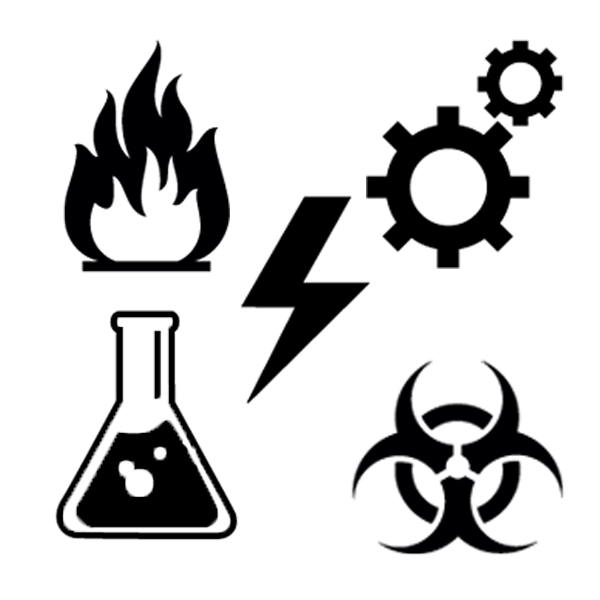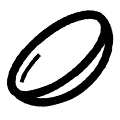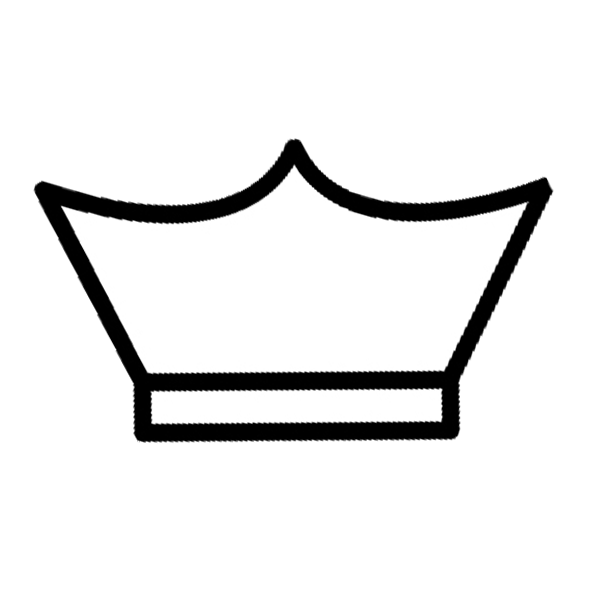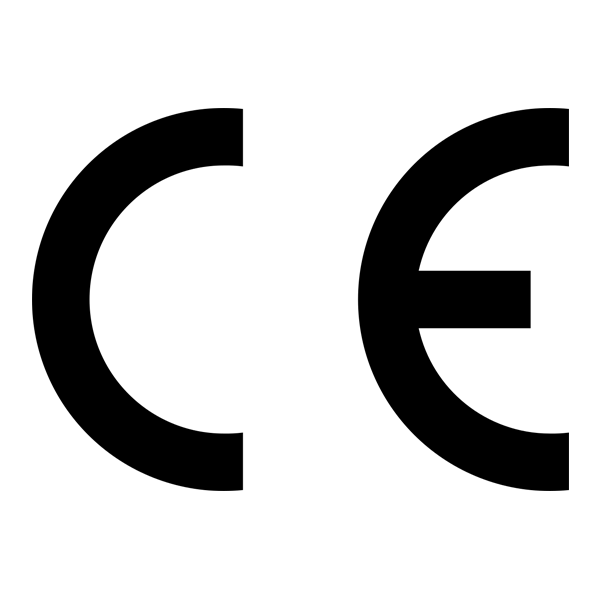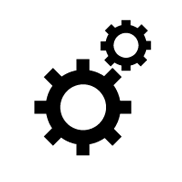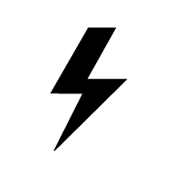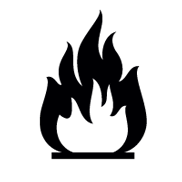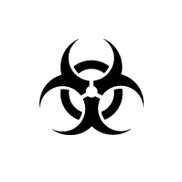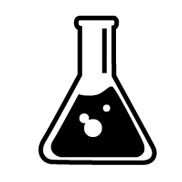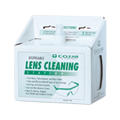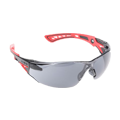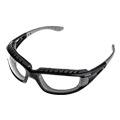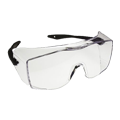Eye Protection
Select from our wide range of major brands
Introduction
This guide helps you select the most appropriate protective eyewear for you and your business.
The guide includes details of the risk types you may be subject to. It gives an overview of lens and frame markings and covers the European safety standards to be aware of when choosing.
Topics in this guide
What type of protection do you need?
Click an icon to find out more
Below are the specific risks in which you may need protection for, click our handy icons to discover which EN Standards you require to stay protected.
Grinding work, particle projections, projections of metal filings or debris from tools.
| Risks or Use | Symbol* | Safety Spectacles | Safety Goggles | Standard |
|---|---|---|---|---|
| Low energy impact 45 m/s | F | 
| 
| EN166 |
| Medium energy impact 120 m/s | B | - | 
| EN166 |
| High energy impact 190 m/s | A | - | - | EN166 |
Protection from live contact and short circuit electric arcs.
| Risks or Use | Symbol* | Safety Spectacles | Safety Goggles | Standard |
|---|---|---|---|---|
| Short-circuit electric arc | 8 | - | - | EN166 |
Sprays of hot liquids or solids, intense heat radiation, radiating heat from furnaces.
| Risks or Use | Symbol* | Safety Spectacles | Safety Goggles | Standard |
|---|---|---|---|---|
| Spray of molten metals and hot solids | 9 | - | 
| EN166 |
Exposure of the eyes to high intensity, ultra violet, infa-red and visible light sources, welding activities, steelworks, surgery.
| Risks or Use | Symbol* | Safety Spectacles | Safety Goggles | Standard |
|---|---|---|---|---|
| Ultraviolet radiation | 2 | 
| 
| EN166 EN170 |
| Infa-red radiation | 4 | 
| 
| EN166 EN171 |
| Solar radiation for industrial use | 5 or 6 | 
| 
| EN166 EN172 |
| Electric welding | EN175 for the hood EN379 for the filter | EN166-169 EN175 EN379 | ||
| Gas Welding | 1.7/3/5 | 
| 
| EN166 EN169 |
| Laser radiation | R1 to R5 LB1 to LB10 | 
| 
| EN207 EN208 |
Protection from toxic dust, aerosols, dangerous liquids, gas or toxic vapors.
| Risks or Use | Symbol* | Safety Spectacles | Safety Goggles | Standard |
|---|---|---|---|---|
| Liquid Droplets | 3 | - | 
| EN166 |
| Liquid Splashes | 3 | - | 
| EN166 |
| Large dust particles > 5 microns | 4 | - | 
| EN166 |
| Gas and fine dust particles <5 microns | 5 | - | 
| EN166 |
Types of eye protection
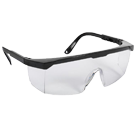
Safety Spectacles
Safety spectacles are recommended for environments where hazards include potential exposure to impact from airborne particles. They are less likely to suffer from 'fogging' than Goggles. Models with side shields offer a greater arc of protection. Safety spectacles are not recommended where chemical splash or hazardous vapours may be present.
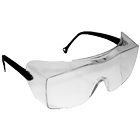
Overspectacles
Overspectacles are designed to fit over most users' prescription spectacles and offer minimal interference. They offer an excellent coverage and field of vision, combined with a high level of protection against impact. They also offer a degree of convenience for spectacle wearers.

Safety Goggles
These provide a secure shield around the entire eye area and offer hazard protection from any direction. They are particularly recommended where users may be exposed not only to impact hazards but more importantly from chemical splash or vapour ingress. Vented goggles are only suitable for impact protection. Non vented types can suffer from 'fogging'.
Lens Materials
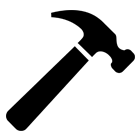
Polycarbonate lenses
Many models of eye protection use polycarbonate lenses. These offer the highest level of impact protection as tested under EN166. They are lightweight and give protection from the harmful effects of UV radiation.

Acetate and CR39 lenses
Acetate and CR39 lenses offer excellent protection against chemicals and still give general impact protection. They are geared more for longer duration against liquid and chemical splash situations.
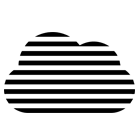
Anti-fog lenses
Ventilated versions give extra aeration to an anti-fog lens but still offer liquid and chemical splash protection .Non Ventilated (or sealed) also conform to the liquid and chemical splash requirements but also provide dust protection.
Mandatory Markings
Lens and frame marking is specific to each product.
Each marking corresponds to a very specific use. Certified by independent labratories, this information guarantees protective eyewear quality and resistance.
Select a standard
Hover over a standard to learn more.
EN standard
For example EN166
Manufacturer logo
Lens technology
European standard
For example

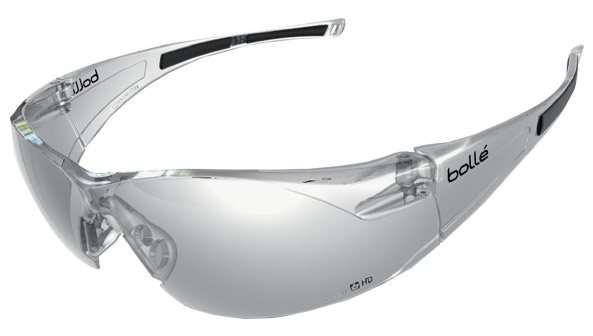
EN standard
Manufacturer logo
Lens technology
European Standards
WARNING
F. maximum protection for glasses
B. maximum protection for goggles
A. maximum protection for face sheilds
If the S, F, B, A and T symbols do not apply to both the lens and frame, the the lowest level must be assigned to the complete protective eyewear.
Basic standards
Standards by type of application
Frame marking
Symbols Explained:
Mandatory marking on frame and lens:
Lens markings
Lens marking must include:
Symbols Explained:
Technologies we offer
Use one of these links to view the products on the RS website
